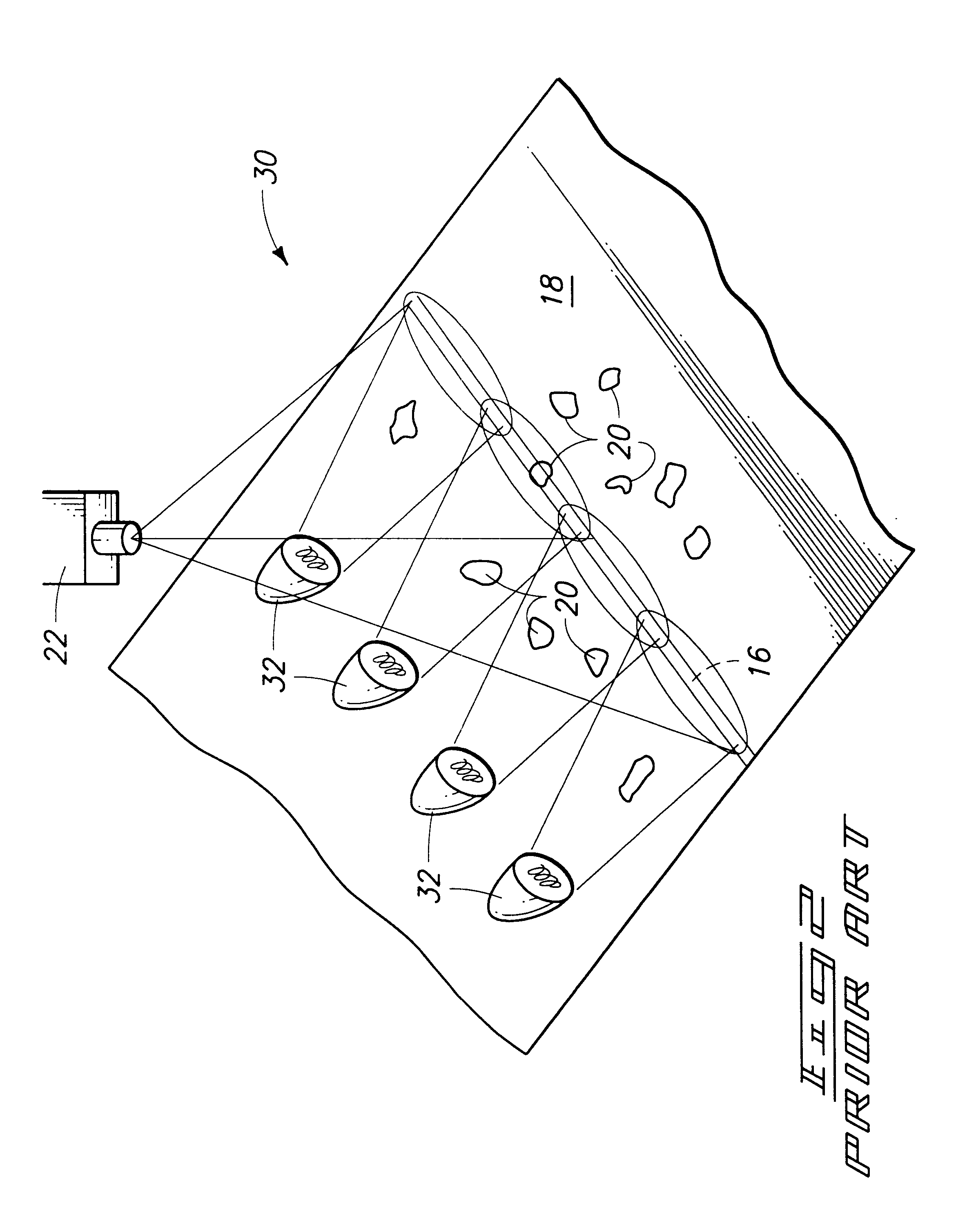Peach pit detection apparatus and method
a detection apparatus and technology for peach pits, applied in the field of peach pit detection apparatuses and methods, can solve the problems of unreliable inspection, unsatisfactory protection of blades, and considerable agricultural processing challenges, and achieve the effect of enhancing detection contrast ratio and cancelling gl
- Summary
- Abstract
- Description
- Claims
- Application Information
AI Technical Summary
Benefits of technology
Problems solved by technology
Method used
Image
Examples
Embodiment Construction
The inventors have discovered that there is a reversal of reflectivity between peach meat and peach pits in the visible versus the infrared portions of the electromagnetic spectrum, at which wavelengths peach pits reflect significantly more energy than peach flesh. For example, FIG. 4 shows spectro-radiographic scans representing the reflectance of Chilean Cling peach flesh 50 and peach pits 52 taken at visible and infrared wavelengths ranging from 350 nanometers ("nm") to 1750 nm. Chilean peach meat 50 exhibits more reflectance in the blue visible wavelengths between 400 nm and 560 nm than does Chilean peach pits 52. However, the reflectance of flesh 50 and pits 52 reverses at about 560 nm and diverges rapidly in the infrared wavelengths above 700 nm.
In another example, FIG. 5 shows spectro-radiographic scans representing the reflectance of Australian peach flesh 60 and peach pits 62 taken at visible and infrared wavelengths ranging from 350 nm to 1750 nm. Australian peach meat 60 ...
PUM
| Property | Measurement | Unit |
|---|---|---|
| length | aaaaa | aaaaa |
| and infrared wavelengths | aaaaa | aaaaa |
| visible wavelengths | aaaaa | aaaaa |
Abstract
Description
Claims
Application Information
 Login to View More
Login to View More - R&D
- Intellectual Property
- Life Sciences
- Materials
- Tech Scout
- Unparalleled Data Quality
- Higher Quality Content
- 60% Fewer Hallucinations
Browse by: Latest US Patents, China's latest patents, Technical Efficacy Thesaurus, Application Domain, Technology Topic, Popular Technical Reports.
© 2025 PatSnap. All rights reserved.Legal|Privacy policy|Modern Slavery Act Transparency Statement|Sitemap|About US| Contact US: help@patsnap.com



